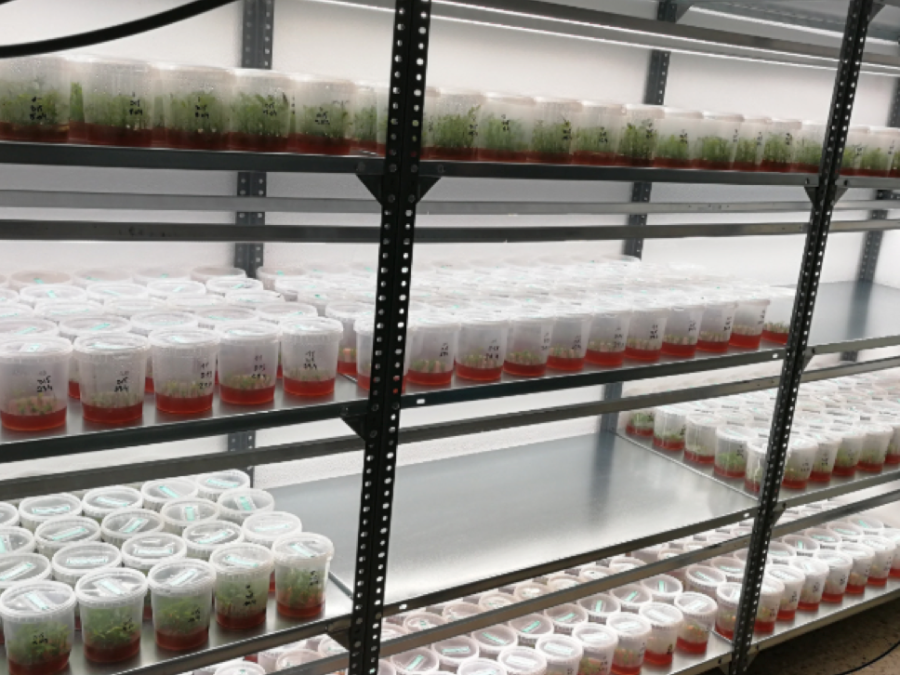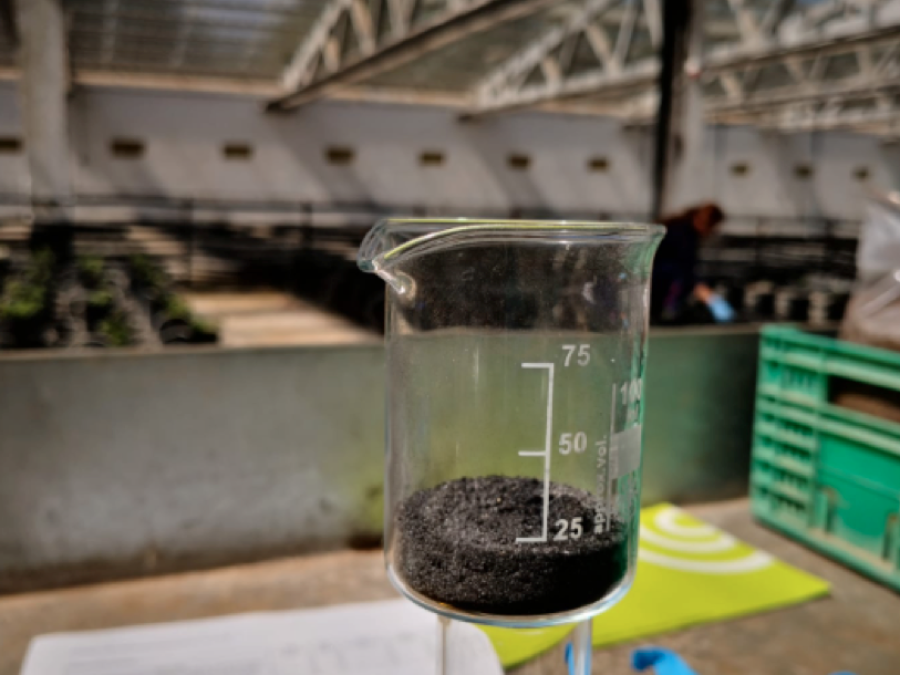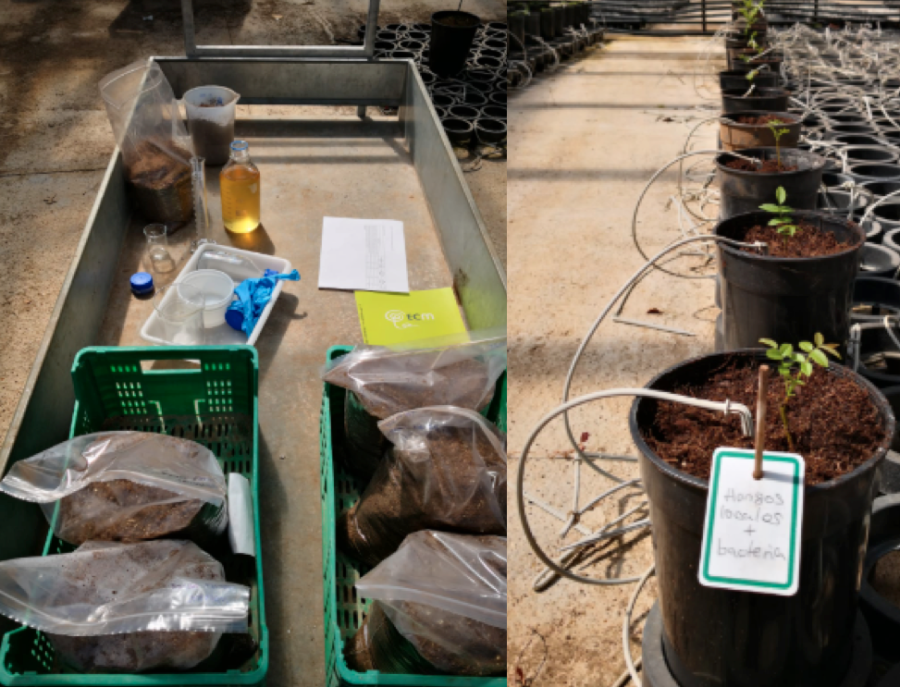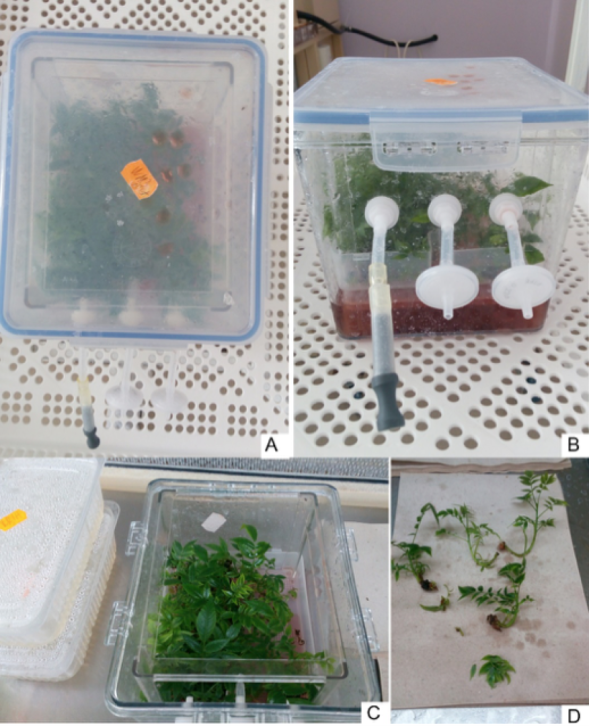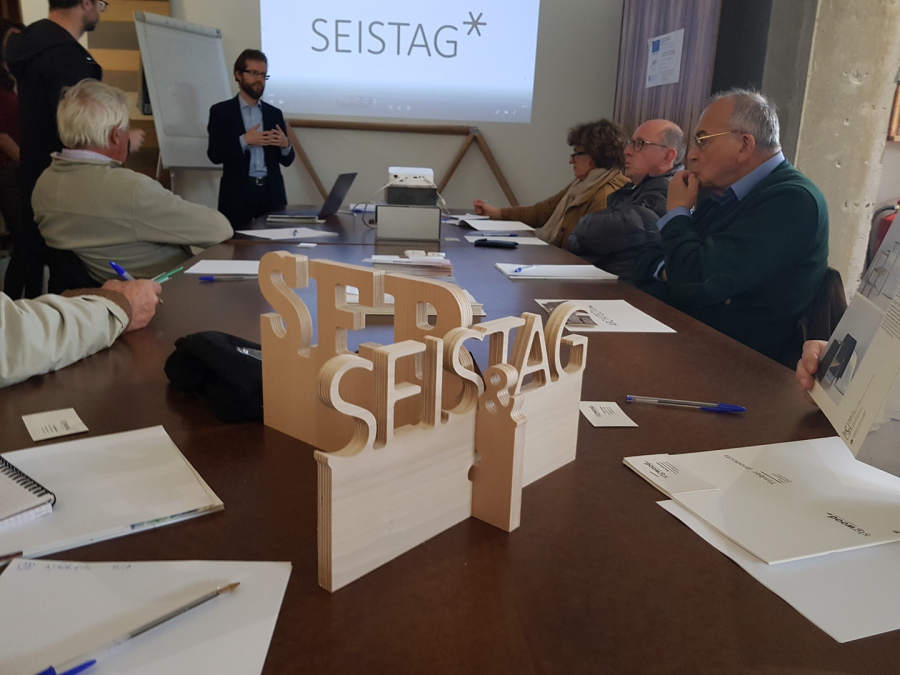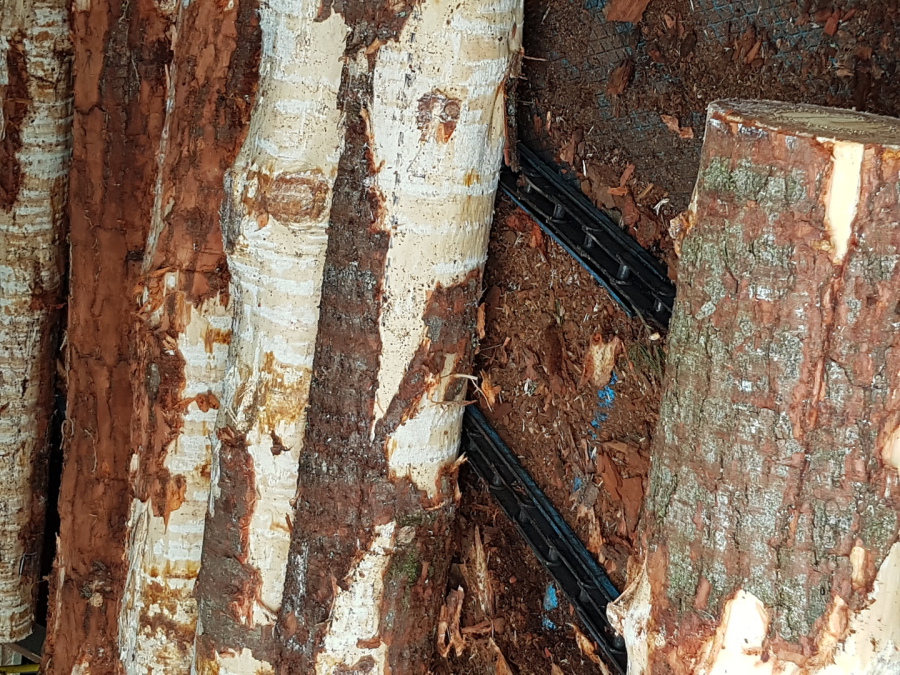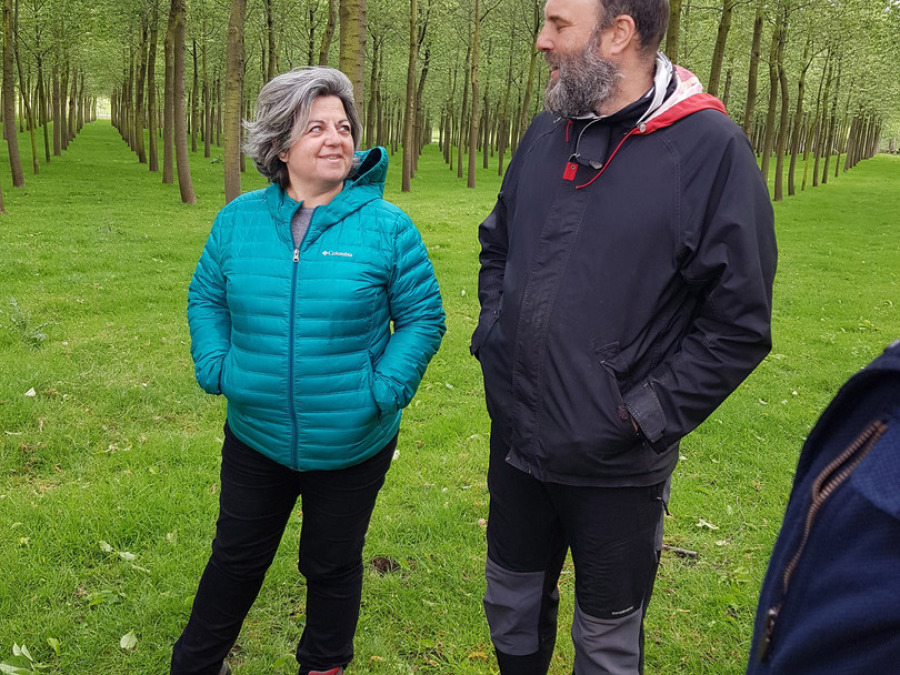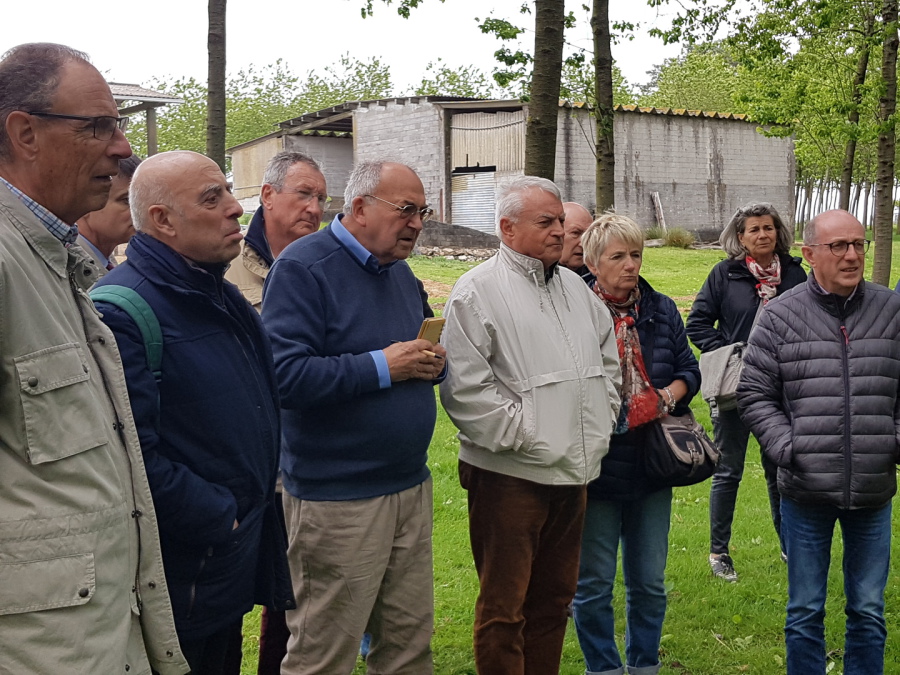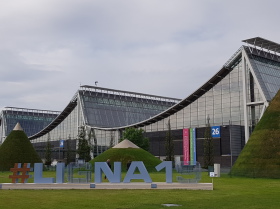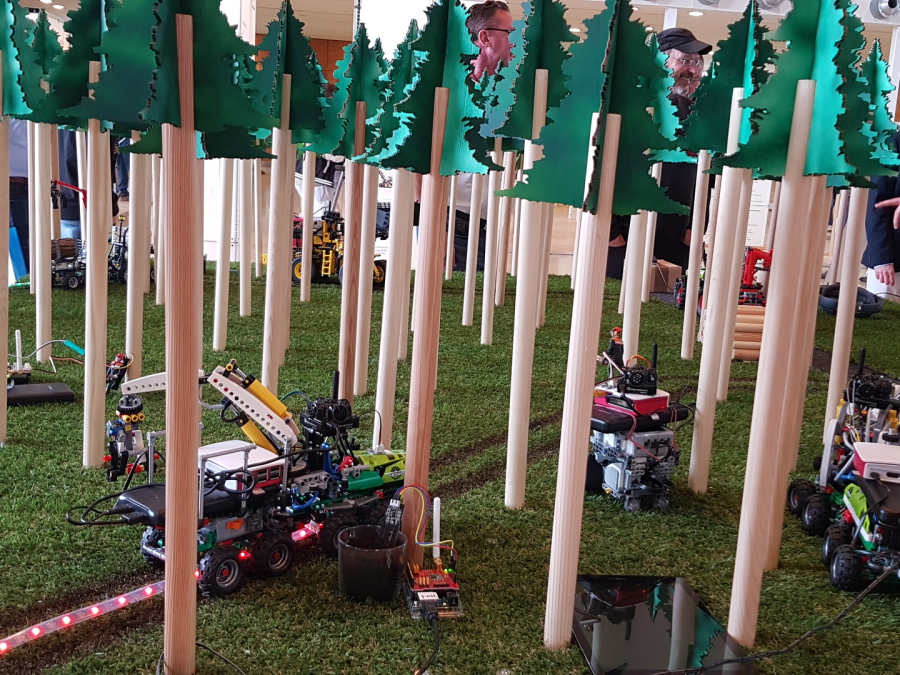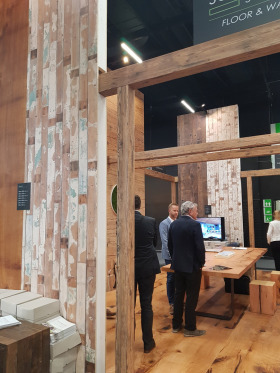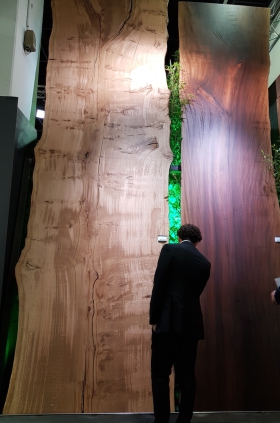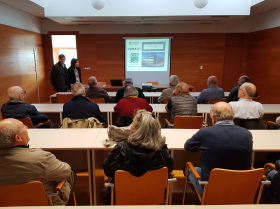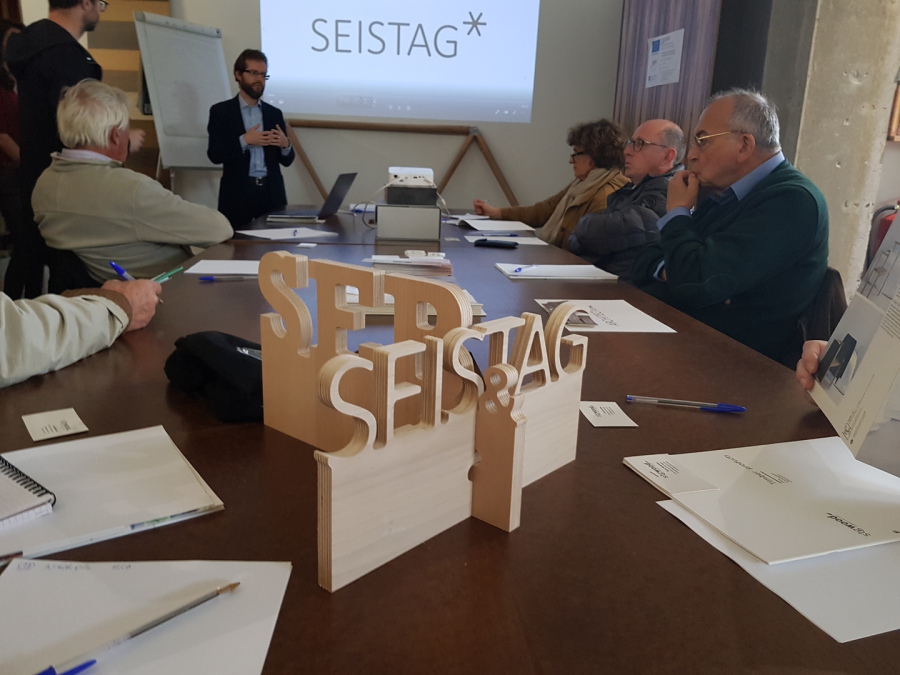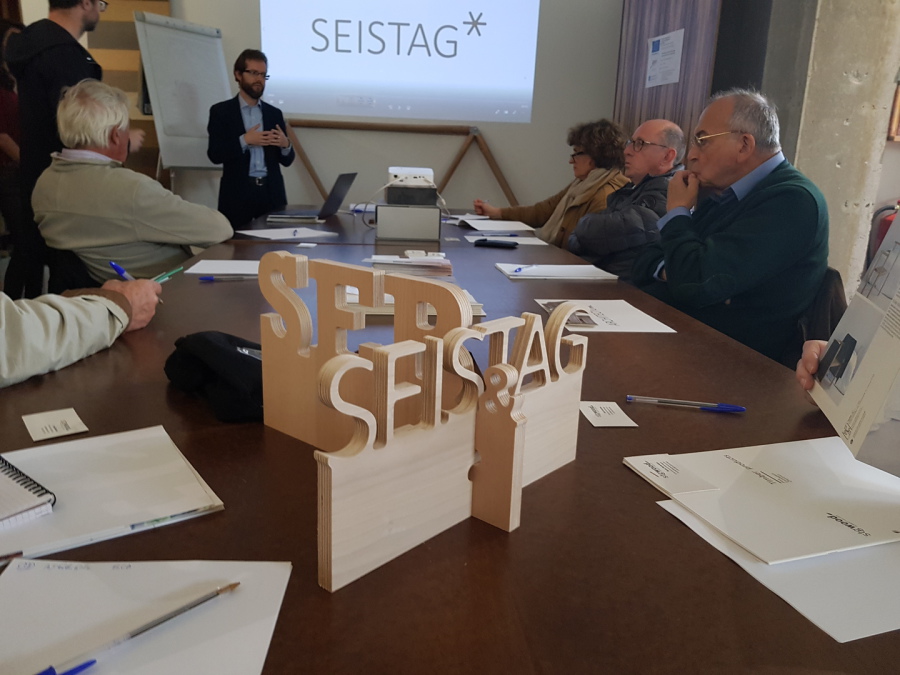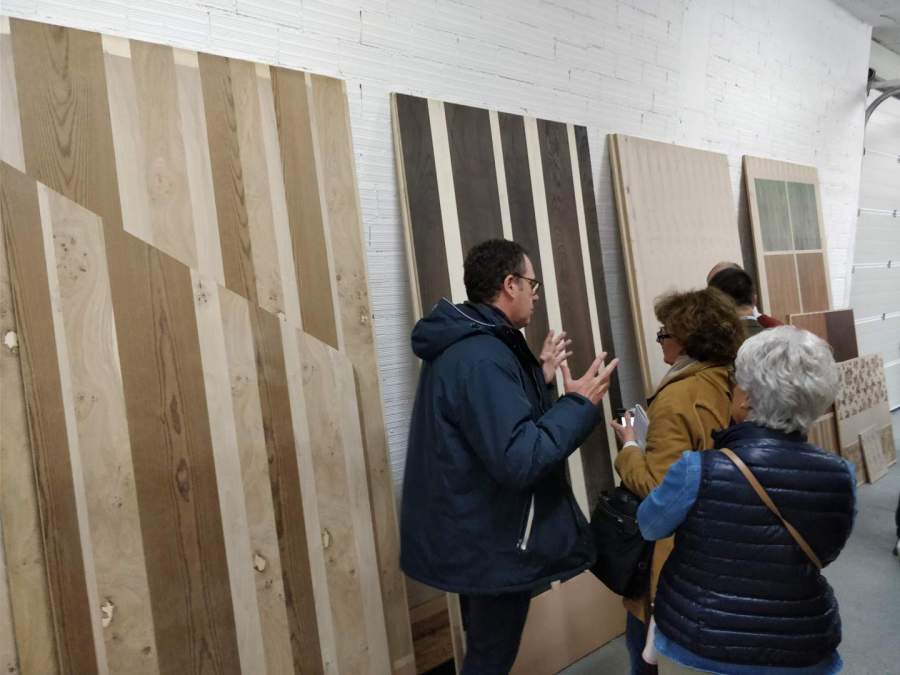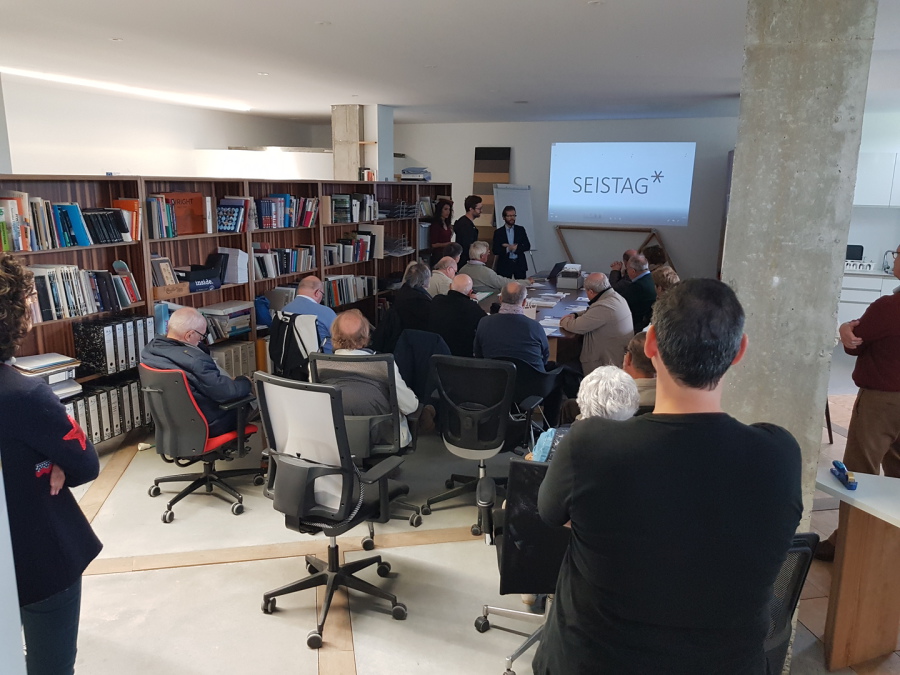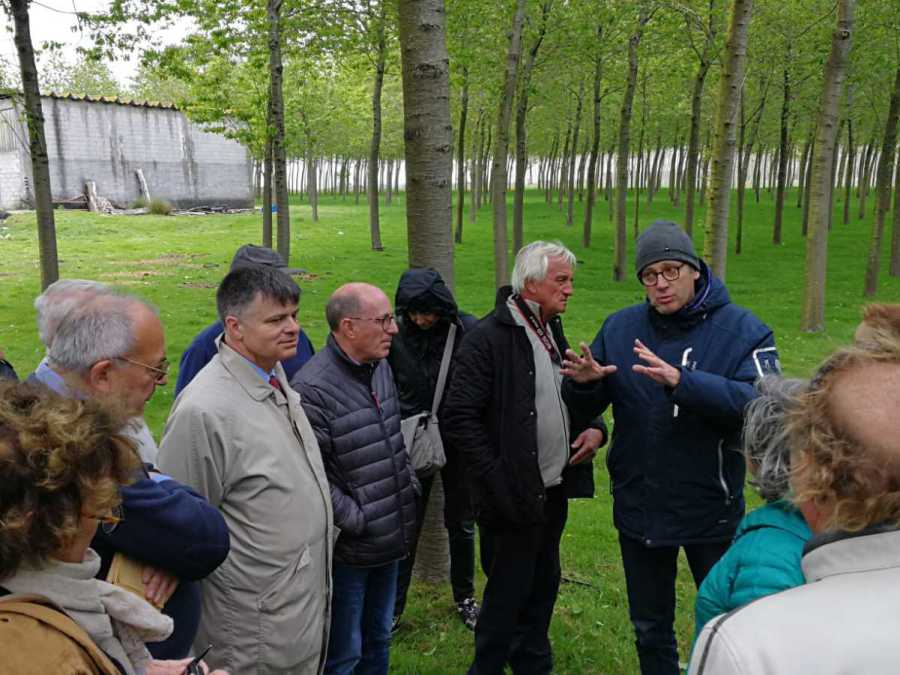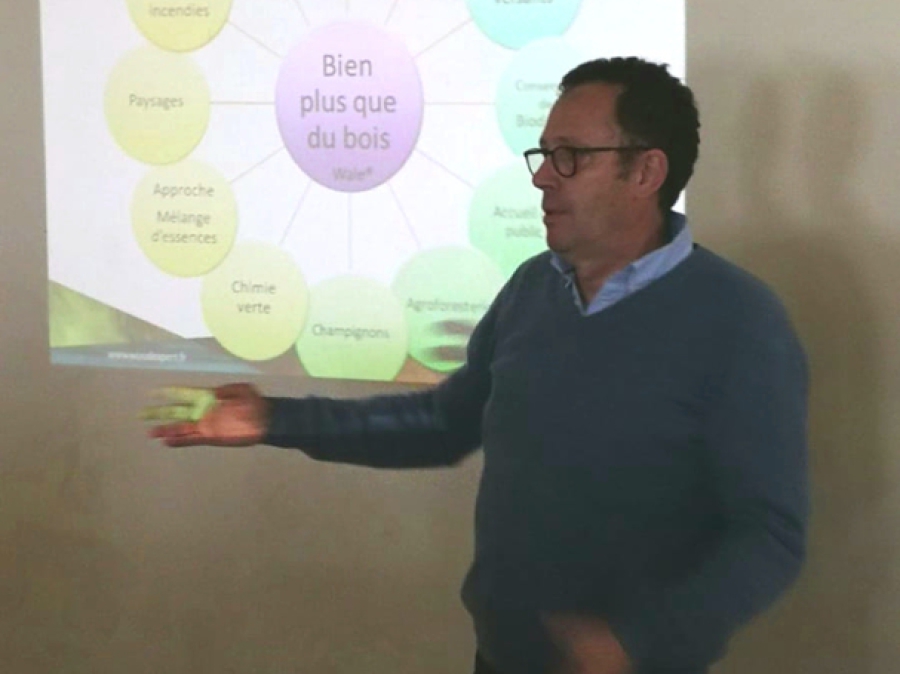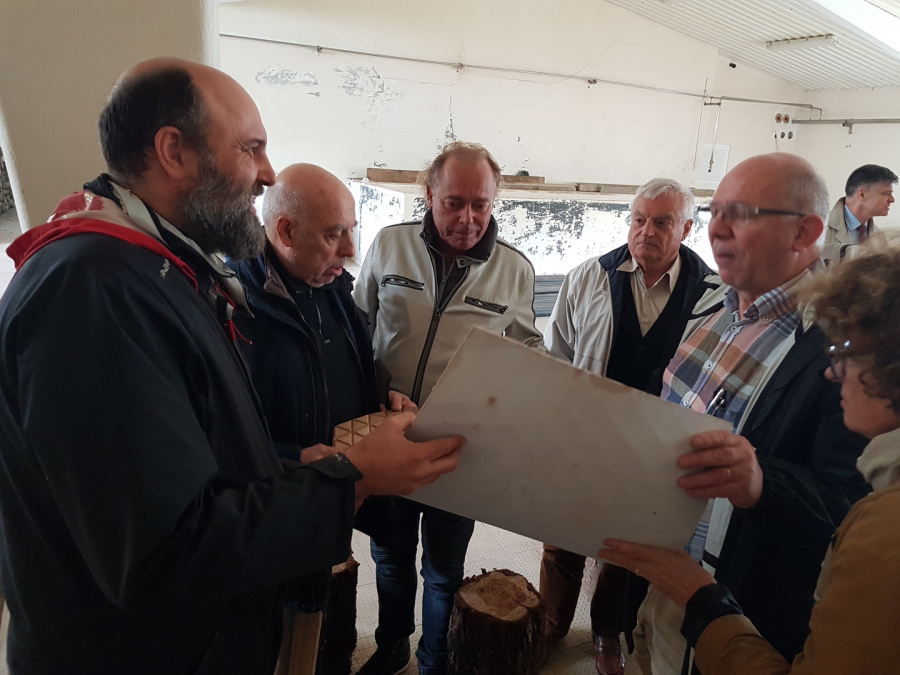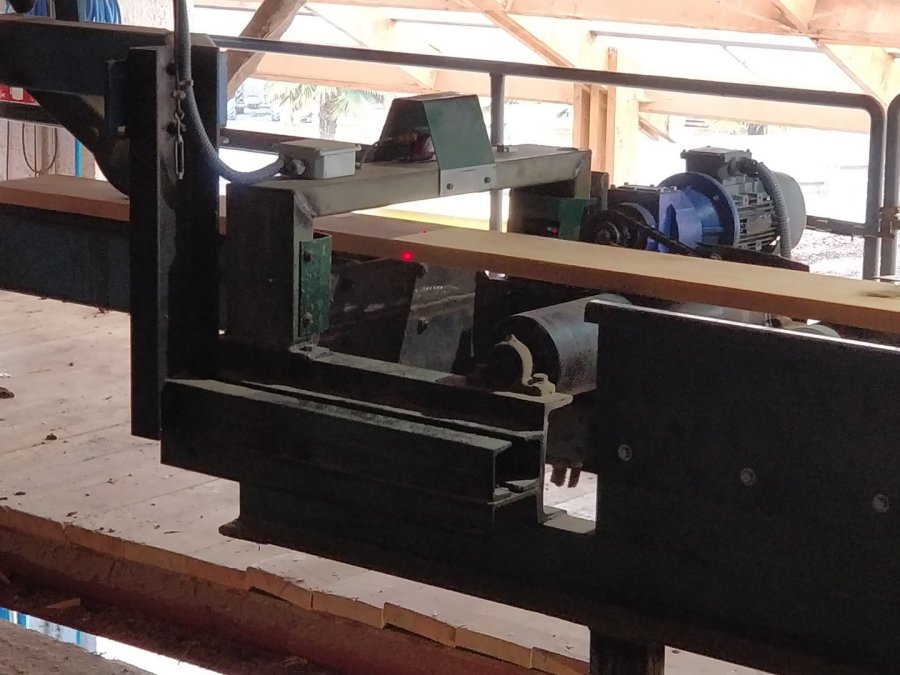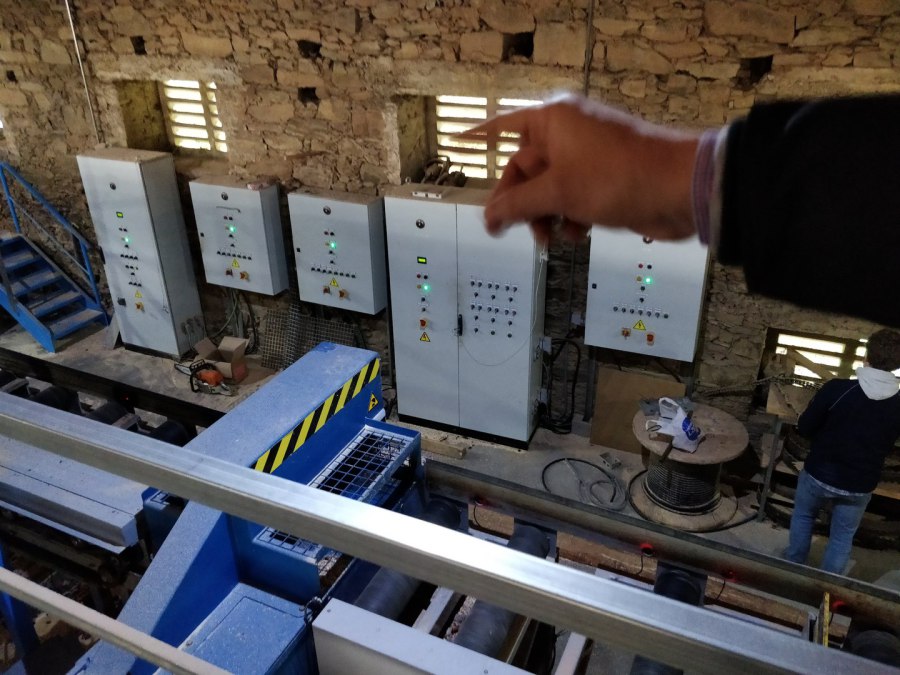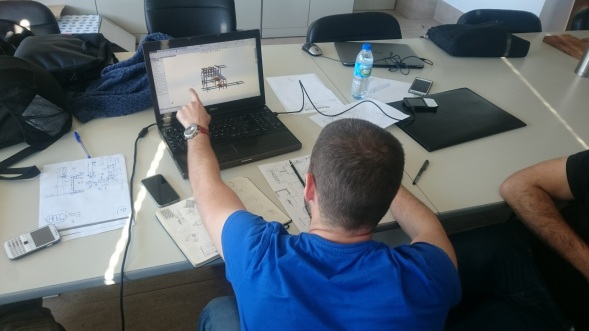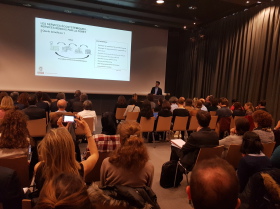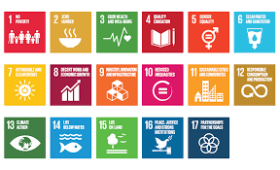Four videos from Woodnat Project are already on the web by Seistag
Up to four videos from Woodnat Project have been uploaded to Youtube in the next weeks. This activity is part of the dissemination program. Therefore, the videos will be also available at Woodnat website, under the tag “medias”. They are already four videos, but more will come to light soon.
The first video refers to the production of European Hybrid Walnut veneered boards. It was published on May the 1st. The images explain the productive process of veneered boards.
On the same date, a second video was uploaded. That one shows innovative boards that have been veneered using mixed species. The pictures show three different models of veneered surfaces, all of them contains a certain amount of European Walnut combined either with Oak or Pine.
The next video was published on May the 21st. It describes the collaboration with SEB, the French Association of Wood Experts. The movie resumes visits and meetings between European Experts and a large number of Spanish SMEs.
The last video published by Woodnat was launched on June the 11th. It provides images of the colour modification of European Walnut Veneer by means of digital printing. On the basis of that technology, Seistag developed a process for changing the dull colour of young European
Hybrids into the bold colour of Regia Walnuts. The process also allows to develop creative products by means of original patterns.
Evaluation of the effectiveness of the stump degradation process in walnut plantations under Woodnat Project by ECM
ECM team is working on the second measurement of the regrowth in walnut plantations for the Woodnat project. Beatriz de la Parra and Javier Cuesta are recording data to analyse the effect of different treatments (chemical and biological) on stump degradation.
After harvesting a tree plantation it is necessary to manage the stumps. This management could be done by removing through heavy machinery, which is expensive and dealt with soil compaction problems or, alternatively, stumps could be left to rot naturally thanks to the action of wood-decay fungi. Wood-decay fungi produce different types of decay, depending on the molecules that they specifically decompose due to the enzymes implicates. The process of stump decay can be naturally random and take very long time. However, the process of stump degradation can be accelerated by means of controlled inoculations.
To evaluate the effectiveness of the stump degradation, an experiment was carried out in four different walnut plantations. Three different types of treatments were applied on the several harvested trees: a) chemical: stump degradation by weed elimination using herbicides; b) biological: stump bio-degradation; c) control: no treatment applied on the stump.
ECM expect high standard results for biological treatments with inoculations of Pleurotus, Lentinula and Trametes. Stump degradation is a sustainable, toxics-free, environment-friendly and nature based solution, which in addition produces edible mushrooms.
ECM team visited last month Galicia and this week will record data in Toledo and Cáceres. In the following weeks Beatriz and Javi will go to Girona in order to record
all the data to assess the effectiveness of this nature based solution.
MYCORRHIZATION OF WALNUT PLANTS
BOSQUES NATURALES AND ECM
Plant mycorrhization in the nursery has been recognized as a helpful practice in order to improve the later establishment in the field and the early growth of tree. To this respect, Bosques Naturales, ECM and ID forests have been working in the improvement of this technique to improve the quality of the clonal plants.
In a first stage, Bosques Naturales sampled the soils in the considered as best sites of the walnut plantation in Galicia and sent to ECM 150 kg of soil. Based on these samples, ECM and ID forests determined the specific fungal and bacterial activity and selected in the laboratory the species to be reproduce.
Considering the selected fungi and bacteria specific for walnut, the idea is to test the capability for mycorrhization in the nursery and analyze their behavior comparing this selected fungi and bacteria with the commercial products in the market.
In a second stage (on May 21st) we established a trial in the Bosques Naturales nursery in Galicia with the following design:
Walnut propagation in PlantformTM bioreactors at Industrial Plants OOD, in Kazanlak, Bulgaria
After the spectacular failure to use Setis bioreactors at IndPl due to the manufacturing flaws of the aforementioned product, research was carried out at IndPl for the micropropagation of the walnut selection coded D15 by using PlantformTM bioreactors, which proved to be usable.
The first successful use of bioreactors for walnut in vitro culture at IndPl is a milestone in our project. It shows that bioreactors can be used for producing good quality walnut plantlets in vitro. The very robust and healthy shoots obtained in three of the experimental treatments presented in this document proved to be very suitable for in vitro rooting. This has potential in the improvement of ex vitro acclimatization and subsequent growth of walnut planting material.
The total absence of shoot tip necrosis in the bioreactor cultures is also an encouraging fact. The bioreactor cultures were 15 days past deadline and had no signs of
senescence and necrosis, as opposed to the cultures in jars on solid media, where shoot tip necrosis appears after the 30-day deadline in many walnut plantlets and progresses downwards as time
passes. This shows that walnut cultures in bioreactors are safe and bioreactors have great potential for obtaining high quality walnut plantlets in large quantities and these plantlets have greater
potential for rooting and acclimatization. Regarding the quality of the plant material obtained, bioreactor cultures are superior when using the proper liquid media.
Société des Experts Bois
Voyage d’études en Espagne. 05 – 10 mai 2019
- Nom de l’entreprise: Scierie SEISTAG
- Date :9 mai
- Lieu : Bertamiorans, Ames (A CORUÑA) GALICE
- Documents joints : Non
------------------------------------------------------------------------
Présentateurs :
- Santiago REY – Directeur - Architecte
- Antonio Magán – Directeur de Projet
------------------------------------------------------------------------
Entreprise
- Activité : Première transformation
- Nombre de sites : 1
- Nombre d’employés : 17
- Chiffre d’affaire : 2,4 Millions d’euros
- Particularité : La Scierie SEISTAG fait partie du Cluster Bois de Galice
- Historique, Evolution : La scierie, reprise en 2015, est en voie de modernisation
- Exportations : 98 % de la production est exportée hors Galice
- Point fort : Scierie 4.0 (interconnectée)
- Ce qui a été plus particulièrement présenté : l’intégralité du site
Matériel principal :
- Particularité : 2 lignes de sciage : billons de 4 mètres et billons de 2,5 mètres.
- Efficacité : Productivité faible (11 000 m3 sciages/17 personnes soit 647m3/homme/an.
Produits : Filière Bois-Construction essentiellement
- Sciages standards
- Madriers 50 x 2,50 toutes largeurs = 60 % de la production
Principaux points abordés lors de l’intervention :
- Le nom et la qualité de l’intervenant : Santiago REY (Architecte et Scieur)
- Le thème présenté / Première transformation et filière Bois-Construction
- Ce sur quoi insiste l’intervenant : Créer une filière Bois –Construction totalement intégrée
- Les enjeux pour l’entreprise (les entreprises galiciennes : ) : Le Développement
- Les objectifs fixés :
- Aujourd’hui 98% vendus hors Galice
- Objectif : 2/3 hors Galice – 1/3 en Galice
- Les méthodes et les moyens déployés :
- Scierie 4.0 (interconnectée)
- L’originalité de la démarche :
- Les résultats obtenus chiffrés (techniques, commerciaux, exportation)
- Exportations sur Chine et Maghreb
- Les améliorations envisagées
- Objectif n°1 : 4.0 avec ERP propre.
- Ecorceuse à changer (Diamètre inférieur à 60 mm)
- Les perspectives ouvertes, les zones d’incertitudes et les insuffisances subsistant
- Intégration insuffisante
- Ce que les entreprises françaises peuvent en retirer (approvisionnent, ventes, développement de produits, méthodologie etc.)
- Modèle de création de cluster, à partir de compétences en architecture.
Autres points :
- Deux essences : Radiata (30%) et Pin Maritime (70%) à hauteur de 22000 m3/an
Rendement matière : 50%.
- Equipements de marque : BARTON et JOCAR pour la scierie.
- Capacité de séchage : 2 cellules de 50 et 70 m3
Cycles : 7 à 8 jours pour épaisseur 50 mm
- Pas de mélange des essences dans le séchoir. Humidité finale : 12 à 14 %.
- Production de sciage : 1000 m3/mois (En plus de 2500 m3 des autres scieries du cluster.
- 75 containers de sciages exportés par mois.
Rapport de la Société des Experts Bois - Visite de Bosques Naturales par Wale
Voyage d’études en Espagne . 05-10 mai 2019
Nom de l’entreprise : BOSQUES NATURALES S.A
Date : Mercredi 8 mai
Lieu: Finca Bosques Naturales S.A. - La Mota – 15810 Arzúa A Coruña.
Encargada: Vanessa Raposo Tel: 699822619
La société
- 1.- Esther Merlo - Directrice General Madera+ (www.maderaplus.es )
Docteure et Ingénieure Forestier - 2.- Ernesto Gutiérrrez - Product Manager www.woodna.es
Ingénieur Forestier - 3.- Vanessa Raposso - Responsable du domaine de Arzua, Bosques Naturales
Technicienne de laboratoire, pépinières et foresterie
La société
Bosques Naturales, S.A. est une PME espagnole du secteur de la sylviculture créée il y a 23 ans, dont les activités sont axées sur la recherche, le suivi et la gestion de forêts de noyers et de
merisiers de haute qualité. L'objectif principal est de réduire la période de culture des arbres afin de produire un bois de bonne qualité en mettant en œuvre des processus spécifiques: sélection des
plantes, sélection des techniques agronomiques et sylviculture intensive.
BN emploie actuellement 44 personnes (dont 16% de femmes) détient et gère 1.300 ha, soit plus de 300 000 arbres répartis dans toute l'Espagne (Galice, Tolède, Gérone, Cáceres et Cuenca).
UNITE DE CULTURE DE TISSUS VEGETAUX - PLANT TISSUE CULTURE UNIT (TCU)
Bosques Naturales a démarré en 2008 son unité de culture de tissus végétaux (UCT). Aujourd'hui, sa banque de matériel génétique in vitro comprend 21 génotypes de noyer hybride et 26 de merisier,
correspondant à des sélections effectuées sur le terrain. Les activités de recherche menées dans ce domaine leur apportent un savoir-faire en matière d'augmentation d'efficacité dans ces domaines
:
- Introduction et conservation des génotypes d'espèces forestières qui les intéressent.
- Mise en service de protocoles de micropropagation.
- Résolution de problèmes associés à la micropropagation.
- Recherches supplémentaires dans le domaine de la culture de tissus végétaux.
Leur activité de production de bois à travers la gestion durable de leur forêt leur permet d’obtenir un bois de haute qualité. En ce sens, ils promeuvent le
développement rural en utilisant les ressources locales pour leur gestion. Ce modèle de production se termine par la mise en œuvre de la transformation du bois.
STRATEGIE DE RECHERCHE
La stratégie de BN s’articule autour de 4 thèmes, sur lesquels ils concentrent leurs ressources en recherche et développement :
- Amélioration du modèle de leurs plantations.
- L'abattage et la récolte du bois.
- Diversification dans les secteurs forestier et agricole.
- L’application pratique de la recherche en biotechnologie forestière.
Ce positionnement est au service du développement de leur nouveau modèle commercial basé sur la production et la valorisation du bois, tout en essayant de réduire l'incertitude liée à la foresterie et à sa longue période de production. De plus, BN affirment qu’ils appliquent à tous leurs processus les principes de l'Organisation des Nations Unies pour l'alimentation et l'agriculture (FAO). Cela conciste nottamment au développement d'écosystèmes d'arbres gérés répondant à des critères agronomiques et forestiers, et ce afin de maintenir et de préserver les ressources naturelles. Selon BN leur activité joue un triple rôle: développement durable, productivité et innovation.
Ligna Hannover by Wale
World market place of innovations for the wood industry
LIGNA staged from 27 to 31 May 2019.
Its organizers are Deutsche Messe and the German Woodworking Machinery Manufacturers' Association (VDMA Holzbearbeitungsmaschine. Until 1975, the Ligna was part of the yearly Hannover Messe. Due to space constraints, it was decided to establish the woodworking section as a separate fair. Since then, the Ligna fair takes place biannually.
There are exhibitions of machines and tools from the following sections:
- Forestry and forest technology
- Sawmill technology
- Solid wood treatment
- Furnishing
- Carpentry companies
- Furniture industry
- Bio energy from wood
LIGNA is the world's leading trade fair for machinery, plant and tools for the woodworking and timber processing industry.
LIGNA is opening a window on the future of the wood processing and woodworking industries. The trade show features all the latest smart technologies, automated systems, digital platform solutions, wood industry trends and innovations, and a wealth of live machine demonstrations. 1,500 companies from 50 countries will showcase their solutions on the open-air site and indoors on 132,000 square meters (1.42 million sq. ft.) of net space.
For Woodnat, LIGNA is an opportunity to understand what could be the possibilities to give value to small diameter logs.
SEE PDF
Document Adobe Acrobat [2.2 MB]
Interzum 2019 by WALE
Interzum is the world’s leading trade fair for furniture production and interior design. This is where the most important business is conducted and momentum for the global furniture supply industry is created. Decision makers, opinion leaders, disseminators and trendsetter from all over the world keep up with the innovations in the industry, seek and establish new contacts – those who want to do truly good business should not miss this opportunity.
In a context of risk management for Woodnat , Participating to Interzum fair is also a possibility for Wale to participate to market niches research. The aim is also to understand what are the trends on the European market.
See pdf presentation
Document Adobe Acrobat [2.5 MB]
SEB – Société des Experts Bois – The definitive action on Woodnat communication and dissemination - Visit and presentation of Woodnat by WALE
May, 8th 2019
21 members of SEB association visited several partners of Woodnat project : Bosques Naturales, Losan and Seistag.
More than 80 experts are members of SEB in France. It is the only association in France and probably in Europe able to offer such diversity of wood experts.
Intervention areas of SEB are:
- Litigation settlement
- Economic and commercial surveys
- Technical survey
- Audits and consulting
- Training
- Certification
- Carbon assessments
- Energy assessments
- Bioenergy program assessments
During their visit at Bosques Naturales plantations , Thierry Charloux, President of SEB, and the members of SEB had the opportunity to receive explanations concerning research, the nursery, thinning and products developed by this European program. SEB has been interested by details given by Esther Merlo from Madera+ (www.maderaplus.es ), Ernesto Gutiérrrez - Product Manager www.woodna.es and Vanessa Raposso at Arzua, Bosques Naturales www.bosquesnaturales.es.
Emmanuel Groutel from WALE also presented Woodnat project to SEB (see PDF attached).
Many collaborations are possible between SEB and Woodnat project, especially those concerning Payment for Ecosystem Services such as :
- Biodiversity conservation
- Carbon sequestration
- Watershed services
- Soil conservation
- Recreational services
As Emmanuel Groutel from WALE concluded : “Woodnat, it is much more than wood”.
Find in this URL a video that summarizes SEB visit to Spain in connection
to Woodnat Project:
https://www.youtube.com/watch?v=6HMJlmjYieA
This visit was also the definitive action on Woodnat communication and dissemination.
ECM’s team presented the WOODnat Project in the IV Exhibition for the employment and entrepreneurship in Palencia by ECM
ECM had the opportunity to explain its role and the main results obtained in the Woodnat Project (Innovation Action GA 728086) in the event IV Exhibition for the employment and entrepreneurship in Palencia, held in Palencia last 9 th of may of 2019. The event, organized by Cámara de Comercio and Palencia Town Hall, and financed by European Social Fund, tried to know the activity of the different small enterprises in the area.
ECM showed its research activity to the general audience, mainly young entrepreneurs and business people. More than 200 people visited the ECM stand asking about the research activities and biotechnology advances carried out in ECM.
WOODNat is focused on the whole walnut hardwood-chain, aims at increasing the use of quality walnut hardwood produced under sustainable management practices in planted forests of southern Europe, which implies adding value to the whole chain of the walnut hardwood market, involving the different stakeholders of the market. Woodnat agreement is composed of 9 companies from 5 European countries (Spain, Italy, France, Bulgaria and Romania) including in it stakeholders from different sectors: nurseries, managers and wood industry professionals.
ECM Ingeniería Ambiental S.L. role’s in the project consists of improving the quality of the walnut plants and their growth in the preliminary stages, improving the profitability of the plantation growing different strains of edible or medicinal fungi and bacterias and making a Stumps Biological Degradation to eliminate the stump in the latest stages of the plantation, to control the grow back of the shoots.
SEB & Seistag by Seistag
Between May the 6th and the 10th SEB visited some Spanish Companies including many of the Woodnat partners. Thanks to this, Seistag had the chance to be visited by more than 20 experts on wood, timber and forest.
Those encounters made possible to disseminate the results of Woodnat Project among the targeted audience: experts who provide advice on wood and forest industry worldwide. Certainly this has been a milestone on the project communication and a great opportunity to communicate the R&D efforts carried out by Woodnat Partners.
The visit to Seistag was held on May the 9th. It included two stops. The first one was focused on a public presentation, which was held at the Company offices. It also included a visit to the Fab/Lab. Later, the group had the opportunity to take part in a tour around the sawmill of Seistag.
During the first visit, it was present Ricardo González, who is the General Manager of CMD (the Regional Cluster of Wood and Design). He shared a technical presentation with the experts from abroad providing a sharp image of the capabilities of the region and its´ industry.
Later, the Company showed their developments and results with Walnut boards. The material that shown included prototypes of veneered boards and colour modification of natural veneer from Hybrd Walnut which was transformed using digital printing. Emmauel Groutel (WALE) explained the technical challenges behind the products.
During the second visit, which is the tour around the sawmill, Seistag provided details on their efforts in the field of green chemistry. This was made by a presentation held by a technician of the Company. GAIN (the Regional Agency for Innovation) and two more Companies (Proquideza and Carronza) attended to the explanations.
By the end of the meeting, Seistag and SEB exchanged presents. Seistag gave to SEB a totem made by means of CNC cutting of veneered boards. Two different species were
used for making that object. From one hand French Beech to draw SEB logo. On the other Spanish Hybrid Walnut to draw Seistag logo.
SEB – Société des Experts Bois – Visit and presentation of Woodnat by WALE
May, 8th 2019
21 members of SEB association visited several partners of Woodnat project : Bosques Naturales, Losan and Seistag.
More than 80 experts are members of SEB in France. It is the only association in France and probably in Europe able to offer such diversity of wood experts.
Intervention areas of SEB are:
- Litigation settlement
- Economic and commercial surveys
- Technical survey
- Audits and consulting
- Training
- Certification
- Carbon assessments
- Energy assessments
- Bioenergy program assessments
During their visit at Bosques Naturales plantations , Thierry Charloux, President of SEB, and the members of SEB had the opportunity to receive explanations concerning research, the nursery, thinning and products developed by this European program. SEB has been interested by details given by Esther Merlo from Madera+ (www.maderaplus.es ), Ernesto Gutiérrrez - Product Manager www.woodna.es and Vanessa Raposso at Arzua, Bosques Naturales www.bosquesnaturales.es.
Emmanuel Groutel from WALE also presented Woodnat project to SEB (see PDF attached).
Many collaborations are possible between SEB and Woodnat project, especially those concerning Payment for Ecosystem Services such as :
- Biodiversity conservation
- Carbon sequestration
- Watershed services
- Soil conservation
- Recreational services
As Emmanuel Groutel from WALE concluded : “Woodnat, it is much more than wood”.
Please visit on LinkedIn
Projet Woodnat par Emmanuel Groutel WALE[...]
Document Adobe Acrobat [17.0 MB]
LOSAN and SEISTAG develop veneer faces
LOSAN produces wood veneer using different wood species and walnut is among them. Veneer is the result of slicing logs. The thickness produced by LOSAN ranges between 0.5 and 2 mm. There are three main slicing technologies: Crown cut, Quarter Cut and Rotary Peeling. Due to the small diameter of the European Walnut tree, the slicing technology used in Woodnat has been the Crown cut technology.
Once the log is sliced, the veneer must to be dried. Once dried, the veneer is squared. After squaring, it is packed in bundles and classified by quality. These bundles are usually the end product of this first transformation. They are properly labelled and each contains 32 veneer sheets. Nevertheless, squared veneers can be joined together to produce faces.
Faces are surfaces of wood produced by means of joining veneers. The design of a face veneer is based on two conditions: dimensions and matching. Note that veneer faces are used to cover boards. Therefore, the dimensions of the faces must fit the dimensions of the boards. They usually are a little wider and a little longer: between 20 to 50m. In order to form faces, the veneers are glued together at the edges. Once the total length is reached, the rest of the last veneer is cut to fit.
The veneers are glued to another by matching. Matching is a complicated process, as it defines the final visual effect of the wooden surface. There are countless possibilities for matching veneers. The most usual one is for the veneer to be similar and to be glued following its pattern: this is called book-match. But it is also possible to combine different veneers and even different species. Those pieces can be matched in different manners, nit just by book-matching.To name just the most common ones: slipped, random or mismatch, fishbone, diamond, etc.
According to the Woodnat work programme, LOSAN and SEISTAG collaborate to produce different prototypes of veneer faces. Considering that most veneer is of narrow
width, the partners agree to develop two trials. One that defines the classical book-match to map productivity, costs and perceived value. And a second one to define random or mismatch compositions
to take advantage of narrow veneers.
Asimov helps Seistag to measure productivity
ASIMOV provides state-of-the-art technology to the wood industry. Despite being a young company, it has already helped many primary processing enterprises. Based on this experience, ASIMOV has implemented a wide range of technological tools at SEISTAG’s facilities over the last few years.
Asimov’s tools and algorithms help SEISTAG to measure inputs and outputs at their industrial sawmill. The software makes decisions on optimal processing itineraries when transforming log into wooden products. The information is captured and communicated by means of the so-called e-Hermes technology. This is a platform of nodes based on open software.
The first action revised by ASIMOV refers to the debarking process. The technology informs on how many logs have been debarked. The programme then reviews log dimensions and the time needed to process them. This is how it contributes to decision-making to increase productivity: volume processed, volume produced, energy consumption and by-products to feed the boiler.
The second action focuses on counting and measuring outputs along the production line. The solution implemented by ASIMOV is based on laser measuring and counting. Thanks to this tool, it is possible to know the exact amount of products in any category such as thickness, width, large, etc. The result are simple figures showing what kind of output is more profitable for a certain input.
The information generated by means of those actions is stored at a database on ASIMOV’s servers. A website displays this information just by querying by date. The access to this information is private. The only way to access it, it is through a local IP address. This design avoids any foreign intrusion of the system.
The design of the tool implemented by ASIMOV is based on the previous analysis of LOSAN’s internal tools for productivity control. LOSAN has developed a complete model
for controlling inputs and outputs with maximal detail. The company developed it because the production of wood veneer consumes expensive logs and lots of human resources. ASIMOV used that model as a
basis for SEISTAG’s development of supporting statistical data for the Woodnat research.
Thick veneer production by Seistag
The industrial Partners of Woodnat developed a large research during the Project´s first Period. The research focused on the production of thin veneer of small diameter European walnut logs. The conclusion was that a feasible veneer production faces many difficulties. One of the paths to success and market uptake could be producing thick veneer (ca. 2 up to 7mm thick). This product might avoid the production difficulties caused by deformation, which are typical of thin veneer. Moreover, the production of thick veneer can be assumed by sawing, which is a technology much more complicated to use for small logs.
Based on this preliminary conclusion, Seistag moved its interest in log peeling of thin veneer to thick veneer production by means of sawing. Therefore, industrial research was developed to design an innovative industrial line. The challenge is to design a productive system dealing with the (large amount of) sapwood and instability of small logs.
The proposed solution is based on a series of processes to reduce human labour and maximize the yield of the production. The first step is a band
saw producing planks with a thickness of 32 to 40mm. The cutting has been improved to maximize the stability of the boards. For this, the protocol for radial cuts is used. After that, an automatic
transversal cut is made to those planks showing raw edges. This measure contributes to maximizing the effective width of the final thick veneers. The third step is using multiple band-saws to produce
five thick veneers of each wood board. After identification, the raw edges are cut out.
RENDEZ VOUS IN PARIS - 9 & 10 April 2019 - PRODURABLE event by WALE
PRODURABLE is the biggest European event of Actors and the Economy Sustainable Solutions. Organized in partnership with the Ministry of Ecological Transition and Solidarity, PRODURABLE collaborates with leading professional networks and specialized media.
Since 2008, PRODURABLE itself as the unavoidable professional event for Sustainable Development and Corporate Social Responsibility (CSR) and Trademark (RSM). 2
days of conferences and networking to shape the future of society.
See you on 9 and 10 April 2019 at the Paris Convention Center for a 12th still intense, friendly and innovative.
- 8000 visitors
- 250 exhibitors
- 130 conferences
- 430 speakers
- 90 journalists
Loans for Corporate Social Revolution!
In 2015, the UN Member States adopted 17 sustainable development goals (SDGs) to give us the way forward to achieve a better and more sustainable for all.
Since companies, territories, citizens, NGOs, institutions ..., a little more each day, it is the entire society that mobilizes given the urgency of the environmental and social challenges that are ours.
The social revolution , (as we must call it by its name), upsets the "economic and commercial" world and forces us to change course, make choices, to face the greatest challenge of humanity preserve man and his environment .
Beyond the wise concept of social responsibility can we speak of a "societal leadership," more determined and more powerful because collective? This new "leadership", which is defined as "the capacity to translate vision into action, inspire, but most influence a community, mobilize and lead its adherence to common goals that make sense. "
- Everywhere emerging new leaders who act for a sustainable and inclusive world . Who are they ? How do they embody a new economic model and even civilization?
- What are the new interactions between business and civil society to usher in "Business for good" ?
- How do brands do they adapt to the requirements of the new consum'actor ?
- What concrete actions and what solutions to lead the " sustainable revolution "?
It was an opportunity to present Woodnat positioning :
- Carbon storage
- Soil preservation
- Water
- Agroforestry
- Mushrooms production
- Green chimistry
- Mix species approach
- Biodiversity
- Landscapes
- Fight against forest fires
- Adaptation to climate change
In fact Woodnat is an incredible way to answer to most of the17 sustainable development goals : Woodnat, it is much more
than wood !
Results of Pots trial after first growing season by CREA
In February 2019 after the first growing season, in CREA nursery, a complete measurement of plants of two hybrid walnut clones (D15 and D1179) has been carried out. For each plants total height, collar diameter and ratio height/collar diameter have been measured. During the transporting from Spain to Italy the plants, in particular the D15 clones, have suffered damages. This problem affected the plants growth and mortality because some plants presented relevant damages to the root system.
At the end of the first growing season only the 56% of D15 clone have shower a clear resprouting after transplanting while for D117 clone the 82% of resprouting have been found.
Measurement of all the plants
All the 142 plants still alive present have been measured. The measurement of total height have shown significant difference between clones but no difference between pots (Fig 1); while no significant difference for collar diameter have been found for clones and pots (Fig 2). The superior height growth of D117 has caused also e superior height /collar diameter ratio in comparison D15 (Fig 3).
Destructive measurements
A sample of 4 plants for each elementary plots has been selected for destructive measurements (48 plants). For each plants the volume of root system, the length of taproot, number of secondary roots have been measured. After all the sampled trees have been sectioned and put in stove in order to determinate the dry weight of stem, taproot and secondary roots.
- Volume of root system (cm3): significant difference between different pots (Airpot=11.53 a; Traditional 15.91 b) but no significant difference between clones (D117 13.41 a; D15 14.03 a);
- Length of tap root (cm) : significant difference between pots (Airpot 14.69 a; Traditional 18.99 b) but not between clones (D15 16.23 a; D117 17.45 a);
- N of secondary roots (n): no significant difference bot for clones (D15 2.13 a; D117 3.46 a) and pots (Airpot 3.04 a; Traditional 2.54 a);
- dry weight of steam (gr): significant difference between pots (Airpot 0.40 a; Traditional 0.64 b) but not between clones (D15 0.50 a; D117 0.54 a);
- dry weight of taproot (gr): no significant difference bot for clones (D15 1.36 a; D117 1.45 a) and pots (Airpot 1.26 a; Traditional 1.55 a);
dry weight of secondary roots (gr): no significant difference bot for clones (D15 2.23 a; D117 2.99 a) and pots (Airpot 2.36 a; Traditional 2.94 a).
The analysis of the two pots and clones have been surely conditioned by the damages after the transport from Spain to Italy. For this reason in 2019 the pots experiment
will be replicated in Galicia SP and a new evaluation of the pot trial in Italy will be repeated after the second growing season.










